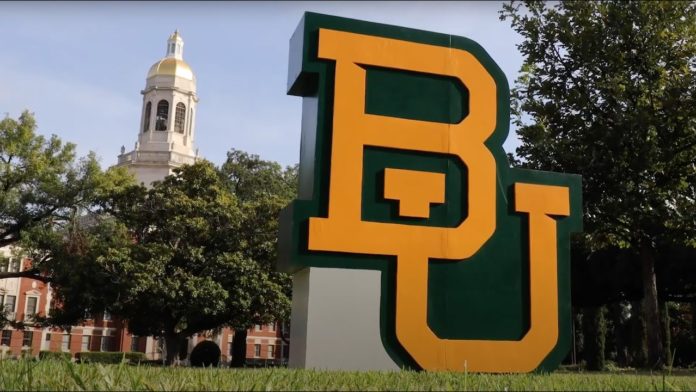
By Clara Snyder | Staff Writer
Finalized in July, Baylor’s Strategic Enrollment Management (SEM) plan lays the groundwork to enhance the future of Baylor and its position as a national university.
Progressing toward greater diversity, tuition aid and graduation rates, the SEM plan aims to further the future of student enrollment success.
Application and admission rates fluctuated in the decade leading up to Baylor’s record enrollment of 20,626 students in fall 2021. Despite this milestone, Provost Nancy Brickhouse said Baylor isn’t seeking to expand the undergraduate population; rather, the motivation to increase application numbers comes from the goal of increasing diversity.
“In order to reach the goals of a brighter diversity, we’ve simply got to have a larger applicant pool,” Brickhouse said. “Over the next five years, our goal is to put into place some specific initiatives … We are looking particularly at reaching out to underrepresented minority populations earlier and more persistently in order to increase the pool of [diverse] applicants.”
Beyond fostering a more diverse student body, the SEM plan hopes to further individual success on academic and financial levels for the wide range of students enrolled at Baylor.
Brickhouse said several initiatives are underway to support academic success, ranging from ensuring students are in the right major to helping them find their sense of belonging at the university. These areas of support help accomplish the plan’s goal of increasing the graduation rate.
“We constantly think about [and] want to make sure we are admitting students who will be successful at Baylor,” Brickhouse said. “For us to bring students in and for them to not finish or not be able to get a degree — they’ve then spent a lot of money, [have] not gotten anything as a result and are arguably worse off.”
Other university organizations such as Student Foundation and student government share this goal of supporting the student body amid the university’s growth.
Andy VanZanten, director of Student Foundation, said via email the mission of the organization is to serve the past, present and future of Baylor. In the organization’s more than 50 years of service, Student Foundation has witnessed the campus’ growth and change.
“Our capacity to offer scholarships to Baylor students has grown as well, and our members are working hard to continue that growth,” VanZanten said. “We were excited to award 102 Baylor students [with] $1,500 or $3,000 scholarships for the 2022-2023 academic year.”
Student government’s allocation fund plays a significant role in pairing with Student Activities to carry out a wide range of events such as Diadeloso and Christmas on Fifth.
The Woodlands junior and student body external vice president Nick Madincea said the fund received $360,000 this year, which was $150,000 greater than the previous year.
“Our overall budget this year is quite a bit larger because of the increase in top-line revenue with Baylor, with having more students here, but also with having a university-wide decrease in expenses [after] COVID-19,” Madincea said. “I would anticipate that if things continue to go well for the university, we should see growth in the SGAF as well.”
Madincea said student government has recently taken strides toward financial accessibility for students in areas of medium-sized expenses, with an example being the development of a graduation gown renting service.
Nacogdoches sophomore and student senator financial chair Logan Lee said their leadership has been working toward diversifying funding allocation.
“The goal that student government has this year in general is to help better represent all of our students,” Lee said. “We are really excited to pair with new organizations or organizations who have never received funding from the allocation fund before.”
According to Baylor Financial Services, approximately 92% of students receive some form of aid toward tuition costs. The SEM plan aims to foster financial accessibility by stabilizing the average student tuition discount rate at 40% by 2027.
“We know that there are families that really need some help, particularly with inflation going up,” Brickhouse said. “We are looking at some very strategic and specific initiatives around providing support for students who have the greatest need.”
Brickhouse also said that although the university may not be responding directly to the loan forgiveness plan taking place at the federal level, it is keenly aware of the challenges students face concerning debt. The SEM plan’s focus on graduation and retention rates can sequentially flatten the curve for long-term student debt.
“Graduating in four years is really important in terms of containing cost,” Brickhouse said. “If you take longer than four years, your debt goes way up, your financial aid goes down and you start taking out loans.”
Brickhouse said developing Baylor’s degree value is something the university thinks about every day. As a 1983 Baylor graduate, Brickhouse said her degree is something people take note of. She also said the value of a Baylor degree continues to increase as the university’s prestige does.
“The R1 designation increases the value of a Baylor degree,” Brickhouse said. “The kind of experiences students are able to have doing research as an undergraduate — that provides publishing as undergraduates, access to graduate school and internship opportunities that add value to a Baylor degree.”





